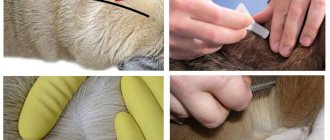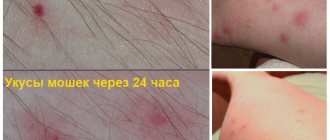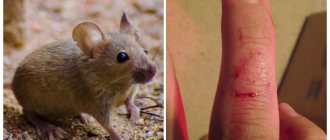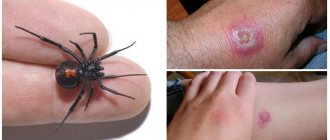Animals, especially pets, bring us so much joy and pleasant moments in life. This is especially true for cats. We love their purring, playing, or simply stroking their soft fur with our hands. And it would seem that children experience the greatest pleasure from communicating with furry friends. However, cats are famous for their capricious nature and can sometimes bite or scratch. Even the most peaceful creature can be thrown out of balance by something, and then a bite or claw mark remains on the skin. What to do if bitten by a cat? How dangerous is a cat bite? And is it worth sounding the alarm if a child is bitten by a cat? How can you recognize the signs of rabies and what are the consequences of such a bite? These questions are quite pressing for those who keep furry pets or encounter them in everyday life. Therefore, this article will help answer them.
Reasons for the attacks
Street cats are quite kind and affectionate, but self-defense instincts can be triggered in such a way that a person receives cat bites and scratches. This behavior can be triggered by the following factors:
- territory protection;
- fear;
- attempting to pet an animal;
- an attempt to separate fighting cats;
- interference in an animal’s personal space;
- human aggression;
- protection of offspring;
- presence of disease.
If an animal bites for no obvious reason, then you should pay attention and consult a doctor. After all, the cause of such behavior can be a dangerous pathology.
Signs of cat bites
With a severe cat bite, the following symptoms appear:
- deterioration in general health;
- pain at the site of the bite;
- increased body temperature;
- greater risk of severe and prolonged bleeding;
- the occurrence of puffiness and swelling.
The reaction of the human body depends not only on the location and depth of the injury, but also on the area of the injured area. Bacteria that enter the body through saliva can cause the following symptoms:
- swelling;
- nausea;
- development of a purulent process at the site of the lesion.
Symptoms of cat scratch disease when bitten are:
- chills;
- severe pain in the head;
- bad feeling;
- decreased appetite;
- temperature rise to 40 degrees.
First aid
A bite from an outdoor cat or even a domestic cat can be dangerous, so it is necessary to provide assistance to the victim. Measures include:
- Rinse the cat bite area with plenty of running water. It is recommended to use any antibacterial soap or laundry soap.
- After an injury, treat the damaged area with any antiseptic or hydrogen peroxide.
- Lubricate the edges of the punctures with iodine, brilliant green or fucorcin, and then apply a bandage.
- If your hand is swollen after a cat bite, you should use Levomekol antibacterial gel. The product has an antiphlogistic effect, so it quickly eliminates inflammation. Also, after damage, the wound should be treated with Tetracycline or Heparin ointment.
- When a cat bite causes your arm to swell and severe pain occurs, ointments such as Indovazin and Troxevasin NEO come to the rescue.
- If after an injury the wound bleeds, then before treating it with an antiseptic, press down on the wound so that the blood comes out. Along with it are pathogenic microorganisms.
If the symptoms do not go away, then the help of a doctor is necessary.
Preventive measures
- Avoid contact with stray cats. It is impossible to predict how such an animal may behave in the next minute.
- Some cats don't really like being petted. Therefore, it is better not to provoke the animal.
- When raising a kitten, nip its aggressiveness in the bud, especially if you see that the baby bites.
- Take your cat to the veterinarian for regular checkups. If a cat is in pain, she may react aggressively to touch. An examination by a veterinarian will reveal the development of any diseases.
- If your pet likes to bite when playing, buy her a special toy.
- Doctors do not recommend that people who have had their spleens removed communicate with cats, as a bite can be fatal to them.
Treat your cat carefully and take care of it. Then you won’t have to complain about the animal’s aggressiveness. If you do get bitten by a cat, you should do everything necessary in a timely manner to prevent the development of infection. Only then can you not be afraid of infectious infection. Now you know how to treat a cat bite.
Treatment after a bite
A doctor should be sure to treat cat bites. It is imperative to take antibiotics within 24 hours after the injury. The doctor selects the medication, but usually these are the following medications:
- Amoxiclav;
- Ceftriaxone;
- Doxycycline.
After a couple of days, the doctor examines the bite site again. If there are no symptoms of infection, then the use of the antibacterial agent is canceled. The injured area must be treated with an antiseptic a couple of times a day. This is necessary so that inflammation and swelling go away.
At the same time, anti-inflammatory drugs are taken that have the following properties:
- pain reliever;
- decongestant;
- wound healing.
When considering what to do if your hand is swollen from a cat bite, the following remedies are usually prescribed:
- Vishnevsky ointment . Effective if the bite has begun to fester. Quickly copes with swelling and inflammation.
- Syntomycin ointment . The product is applied under the bandage. Its use improves the healing process and disinfects the wound.
- Heparin ointment . Fights redness, promotes the resorption of hematomas.
Before taking medications, it is important to consult a doctor so as not to provoke unpleasant consequences.
Prevention
To avoid being bitten by a cat, you do not need to pester the animal. A pet must be vaccinated in a timely manner and shown to a veterinarian - for example, an average of 22 days pass from the first signs of rabies in an animal to death. The analysis can be carried out within 15 minutes using rapid tests. They also donate blood for testing to the laboratory - traces of various infections can be found in the biomaterial: viral, chlamydial, mycoplasma, etc.
Cats sometimes show aggression and bite their owner or guests. Usually a person is not worried about this, but this is wrong: cat scratches and bites can cause serious harm to health. Therefore, you need to know how to help yourself and what to do if bitten by a domestic cat.
Treatment with folk remedies
When considering what to do if you are bitten by a domestic cat, you can resort to traditional medicine. But you shouldn’t rely only on grandma’s recipes, as they should be included in a comprehensive treatment regimen.
The most effective means are considered:
- Aloe juice . Fresh plant juice is used for lotions to cope with the acute inflammatory process and speed up regeneration.
- Honey and onion puree . Grind the onion using a blender and add a little honey. Take a piece of gauze, spread the paste and apply a compress to the painful area.
- Initial letter . The plant is dried and then ground into powder. Sprinkle the raw material onto the wounds after a bite. The powder is especially effective for weeping and long-healing wounds.
- Chamomile infusion . Chamomile herb is poured with boiling water, and the resulting product is used as a natural antiseptic for washing wounds.
- Infusion of immortelle . Pour boiling water over the dry herb and leave to infuse in a sealed container for several hours. Take the resulting product 1 spoon three times a day.
- Thyme infusion . Pour vodka over the grass and leave to infuse for 2-3 weeks. The resulting product is characterized by disinfecting and antiphlogistic properties. Use regularly to treat affected areas.
Folk remedies are an excellent addition to the general treatment regimen due to their safety.
Fluffy and purring
Domestic cats are very capricious animals. They are completely dependent on a person, but with their appearance and behavior they always prove the opposite and allow themselves to be loved. Those who get furry beauties do it with pleasure, because purring creatures bring a lot of joy.
The advantages of cats over other pets are obvious:
- They are highly trainable - cats perfectly remember the “house rules” of an apartment or house, they know what is possible and what is not.
- Does not require walking outside. Cats can go to the toilet on the tray, and special fillers allow you to completely get rid of unpleasant odors.
- They are not difficult to feed. Most tailed pets are unpretentious in food and eat dry food, which is sold in any store. They also tolerate food from their owners’ diet very well.
- They give positive emotions. It has been scientifically proven that stroking a cat to the sound of its purring calms the nerves and normalizes the heart rate. In addition, even with an adult beauty you can always play and watch how she frolics, charging with positivity.
When to see a doctor
The listed measures will help if a healthy animal has bitten. There are a number of symptoms of a cat bite when you cannot hesitate. This:
- temperature rise above 37 degrees;
- noticeable swelling of the affected area;
- it is not possible to stop bleeding from the wound;
- there is an acute inflammatory process that cannot be dealt with on your own;
- damaged tendons, joints or ligaments;
- nausea and vomiting, diarrhea, severe pain appeared;
- the cat’s health is in doubt, and it can transmit dangerous diseases;
- bite of someone else's cat, regardless of its appearance and condition.
If the damage is severe enough, then only a doctor will determine how to treat cat bites and scratches. Just peroxide and decongestant gels and ointments will not provide adequate help if the individual was large enough.
How to tell if a cat might bite
The cat warns before the attack
When a pet is tired, angry, irritable or playing aggressively, it always shows before attacking; just watch it and avoid being bitten.
Important: a cat always warns of its intention to bite; you just need to catch its signals.
Signs that your cat may bite now:
- Wags its tail from side to side from the base. Since childhood, people have known that a cat shows dissatisfaction with its tail, and a dog, on the contrary, shows joy and greeting. Therefore, if you find that your cat is wagging its tail dissatisfied and actively, you should not provoke it into aggression, since the next step may be a bite.
- Raised one or both paws up . She hasn't done anything yet, she warns that she is ready to defend herself. And if you ignore this, you can get your well-deserved portion of bites.
- Hisses. Another warning signal, in the form of a defensive reaction. She seems to be saying: “Leave, otherwise I will attack.”
- She arched her back and raised her fur. The cat is about to attack, and then teeth and claws will come in. It is advisable to avoid conflict, get away from the animal, and maybe isolate yourself in another room for a while.
- Ears back and dilated pupils also indicate the animal’s excited state and if provocation or stress continues, there is a possibility that it will show aggression.
- During the game, she grabbed her arm/leg with her paws . Captured prey - bite. A simple rule for mustachioed pets. It is advisable to stop playing or prevent the bite.
All actions of the animal are precautionary in nature, so a bite can always be avoided.
Consequences of cat bites
Even a superficial cat bite can cause significant harm to human health. Pathogenic flora from the animal’s saliva, which penetrates into the body through a wound, in 75% of cases leads to the progression of the infectious process.
The consequences of a cat bite can be:
- Pasteurellosis . Most often, this pathogen enters the human blood. Immediately after the injury, redness and swelling of the damaged skin are noted. The patient's temperature rises, skin inflammation, chills, and fever occur. In the case of a severe stage, systemic inflammatory reactions occur.
- Streptococci, staphylococci . Immediately after pathogens enter the bloodstream, the patient experiences aching bones, dermatitis, cough, suppuration of the injury site, skin rashes, and severe damage to the respiratory system.
- Tetanus . There is a high probability of contracting tetanus, especially if bitten by a stray cat. A person bitten by a sick cat experiences headaches, fever, inflammation of the lymph nodes, cramps, and muscle tension. If anti-tetanus serum is not administered in time, it will lead to death.
- Rabies . The clinical picture may appear after 9-51 days. A week before death, the animal begins to hide from the sun's rays, becomes aggressive, and attacks people. The animal begins to drool due to paralysis of the larynx. If an animal with such symptoms is noticed, then it is necessary to bypass it and call a special service. A person who has been bitten by a sick animal needs to be given rabies vaccines. It is important to do this until your appetite begins to deteriorate, inflammation begins at the site of the bite, lethargy appears, and the urge to vomit occurs. If timely treatment is not provided, death is inevitable.
- Chlamydia . This is an infection that can be transmitted by both outdoor and indoor cats. The presence of an infection in an animal can be determined by the following signs: the flow of clear fluid from the nose or pus, the cat sneezes, and refuses to feed. If an animal infects a person, conjunctivitis will begin to progress. The patient's temperature will rise and weakness will appear. There is no particular danger to humans.
- Salmonellosis . A bacterial infection that is dangerous for both animals and people. The disease affects the gastrointestinal tract, nervous and vascular systems, and provokes intoxication of the body. If a sick cat has infected a person, then the following symptoms appear: high fever, abdominal pain, diarrhea, decreased appetite.
It is worth noting that the listed diseases are more often transmitted by street cats, but not a single domestic cat is immune from them.
Does biting mean he loves?
A cat bite is a manifestation of aggression.
Many owners consider cats that bite during play to be quite normal: biting means loving. But professionals have a different opinion on this matter. They call this behavioral factor aggression generated by affection. Agree, it’s difficult to understand this term, so let’s look into it.
Any friendly cat craves human attention. Sometimes this attention becomes too much, a certain toggle switch is triggered, and before our eyes the affectionate cat suddenly turns into a wild animal. Why this happens is difficult to say, but there are several assumptions:
- increased aggression occurs when the cat tries to control the situation and fails;
- the animal becomes angry due to the owner’s excessive importunity, for example, if the owner uses prohibited techniques: stroking against the grain, hitting the ears, etc.;
- psychological factors when an animal begins to dislike something during games.
By the way, you can notice growing irritation even before the bite: the cat shows its displeasure with what is happening with certain signs and behavior.
Bites resulting from the above reasons are unlikely to be caused by real aggression. Real rage usually occurs at the moment when the pet is very frightened of something, has been inflicted unbearable pain, or when it feels anger directed in its direction.
In some cases, distinguishing between play and truly aggressive behavior can be problematic. You need to focus on behavior:
- During entertainment, the cat’s face is friendly, its mouth is half-open, the animal can jokingly attack, jumping on the “enemy” sideways and arching its back.
- During the period of real anger, when the animal seriously decides to attack, it will hiss, growl, shake its tail from side to side, and purposefully prepare for an attack.











